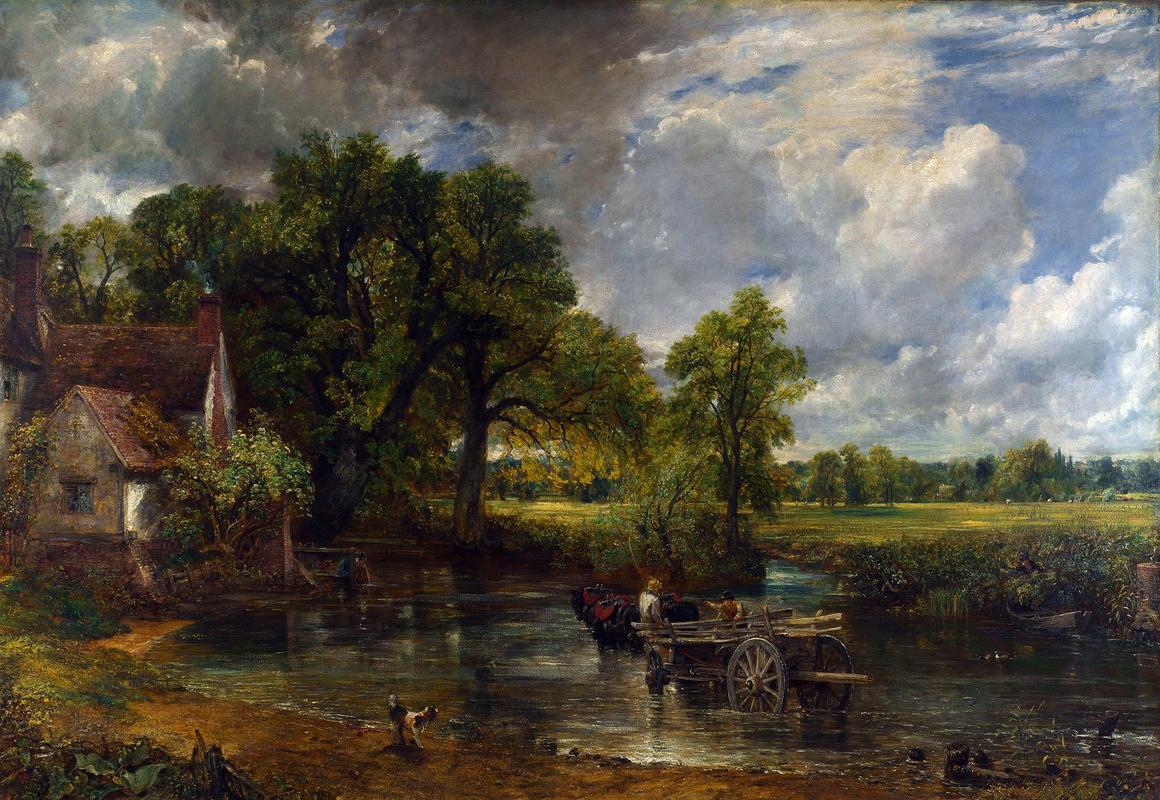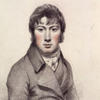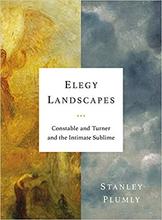Hurry, plan your trip to see Constable's ol' stomping grounds soon. It might get the wrecking ball within a couple years.
One of the coolest things about looking at a Constable painting is that you can take a ride out to his family's old country estate and track down some of the spots that gave him inspiration, as is the case with The Hay Wain. This IRL locale was a cottage on a stream that his father rented out to a farmer by the name of Willy Lott. In 2015, developers started the process to build 144 residential units and homes in the surrounding area. If it happens, the construction alone will permanently alter the face of the landscape. Undoubtedly leading to the destruction of the natural splendor that served as inspiration across Constable's oeuvre. Area residents and concerned citizens are putting up a fight, but only time will tell whether they can pull off the big win and kick the developers out of Constable's home turf.
The painting's original title was Landscape: Noon. One of Constable's friends was enamored of it and kept asking after the picture with the hay wain. That, of course, being the type of horse drawn cart resting midstream in the middle of the painting. Constable painted Hay Wain in his usual fashion, making a bunch of preparatory plein air sketches, then hunkering down in his London studio to let his imagination run wild with the impression all his preliminary work had left. While the British believe it's one of the MVPs from the kingdom's entire history of art, its initial reception was entirely 'meh,' premiering at the 1821 Royal Academy show to a collective yawn. Constable took his wares over to the Paris Salon instead, where Charles X of France awarded Hay Wain a gold medal.
In 2013, some jabroni touring the National Gallery stepped forward from his group and taped a picture onto the canvas. Guards pounced on his sorry butt. Taking him to the ground until police arrived to drag him off (presumably to be beaten in the alley, like anyone that messes with art deserves). The picture he affixed to the canvas was of his son, the vandal having recently lost a court appeal for custody of the boy. The man is a member of the group Fathers4Justice, which rudely applauded his effort to bring attention to the plight of families torn apart by the British court system. Fathers4Justice went so far as to encourage other like-minded men burned by the legal system to act out in a similar fashion. Luckily, The Hay Wain was back on the gallery floor in a jiffy. Hopefully F4J will reconsider the efficacy of their strange approach.
















I like how John put an emphasis on the water and made a nice reflection that ties the image together. He also gives the trees nice detail!